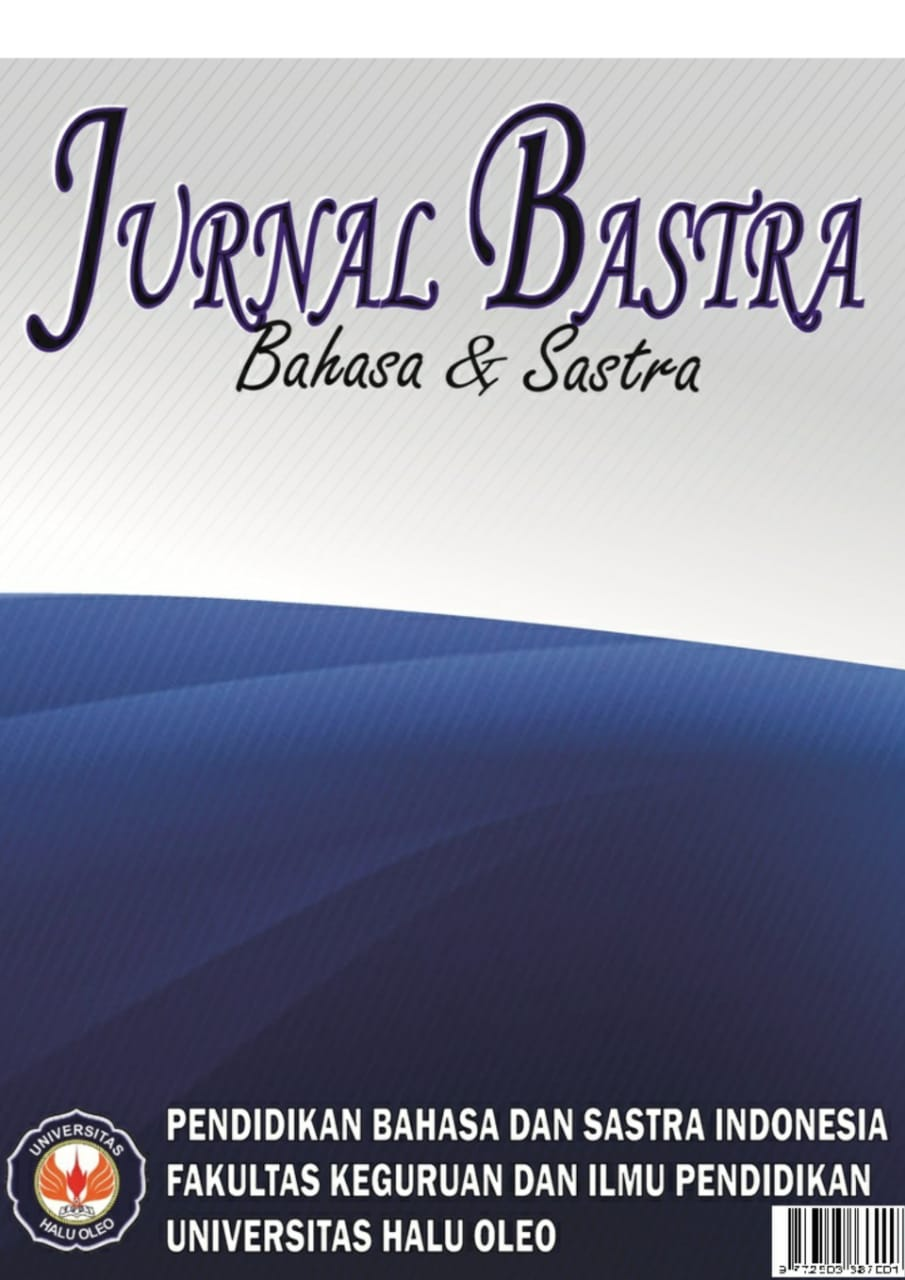KEMAMPUAN MENUNJUKKAN KARAKTER TOKOH DALAM DRAMA MENGGUNAKAN MODEL STORYTELLING: SEBUAH PENELITIAN KUASI EKSPERIMEN
DOI:
https://doi.org/10.36709/bastra.v10i3.1825Keywords:
Storytelling Model; Showing one of the characters; DramaAbstract
Students have difficulty in learning to play one of the characters in a drama. This can be seen from the low scores of students in the ability to play one of the characters in a drama, the lack of student interest in learning drama, students still seem not confident in playing the character in the drama in class, and the learning model used is not appropriate. The purpose of this study was to find out (1) To find out how the ability to play one of the characters in a drama is for class XI students of SMK Negeri 11 Medan without using the Storytelling learning model; (2) To find out how the ability to play one of the characters in a drama is for class XI students of SMK Negeri 11 Medan using the Storytelling model; (3) To find out how the Storytelling model influences the ability to play one of the characters in a drama for class XI students of SMK Negeri 11 Medan. This study used a quasi-experimental method with a post-test two group design model. The results of the study showed that 1) The ability of class XI students of SMK Negeri 11 Medan in playing one of the characters in a drama without using the Storytelling model is included in the good category with an average value of 71.50. 2) The ability of students of class XI SMK Negeri 11 Medan in showing one of the characters in a drama using the Storytelling model is included in the very good category with an average value of 84,48. Based on the t-test, with a significance level value of α = 0.05 and n = 30, a t-table value of 2.04 was obtained. Therefore, it can be concluded that t-count> t-table, which is 5.275> 2.04. This proves that there is a significant influence of the use of the Storytelling model on the ability to show one of the characters in the drama.
References
Barus, E., & Yuhdi, A.(202). Analisis Nilai Moral dan Konsep Kepahlawanan Dalam Film “3 Nafas Likas” Karya Rako Prijanto. In Prosiding Seminar Nasional Pendidikan, Bahasa, Sastra, Seni, dan Budaya, 2(1), 261-271. DOI: https://doi.org/10.55606/mateandrau.v2i1.275
Dewi, N. P. D. S. (2019). Pengaruh Metode Bercerita Berbasis Kearifan Lokal terhadap Kemampuan Empati Anak Kelompok B1 TK Tunas Daud Kecamatan Denpasar Barat Tahun Ajaran 2018/2019. Jurnal Pendidikan Anak Usia Dini Undiksha, 7(1), 78–87. DOI: https://doi.org/10.23887/paud.v7i1.18761
Dian, N. (2020). Pementasan Drama Melalui Pendekatan Contextual Teaching and Learning. Jurnal ilmu kependidikan, ITQAN.
Dita, R., Sapri, S., & Siregar, L. N. K. (2024). Pengaruh Model Storytelling terhadap Kemampuan Menyimak Cerita Bergambar pada Siswa Kelas V MIS Insan Ikhlas Islamic School Medan. Jurnal Bintang Pendidikan Indonesia, 2(2), 88-100. DOI: https://doi.org/10.55606/jubpi.v2i2.2919
Junaidi Dede, dkk. (2024). Pengaruh Penerapan Story Telling Untuk Meningkatkan Keterampilan Berbicara dalam Cerita Rakyat (HIKAYAT) Siswa Kelas X SMA Ulun Nuha Medan Tahun Pembelajaran 2023-2024. Jurnal Pendidikan Tambusai, 1(8), 9756-9768. DOI: https://doi.org/10.31004/jptam.v8i1.13869
Lufri, D. (2020). Metodologi Pembelajaran: Strategi, Pendekatan, Model, Metode Pembelajaran. Malang: CV IRDH.
Rohman, D. (2021). Drama: Teori dan Pementasan. Madiun: UNIPMA Press Universitas PGRI Madiun.
Supini, P dkk. (2021). Pembelajaran Menulis Teks Drama dengan Menggunakan Metode Picture and Picture. Jurnal Pendidikan Bahasa dan Sastra Indonesia, 4(1),16-23.
Saragih, K., & Yuhdi, A. (2023). Analisis Nilai Sosial pada Film “Sejuta Sayang Untuknya” Karya Wira Putra Basri. In Prosiding Seminar Nasional Pendidikan, Bahasa, Sastra, dan Budaya, 2(1), 251-260. DOI: https://doi.org/10.55606/mateandrau.v2i1.274
Safira, S. D., & Yuhdi, A. (2022). Analisis Kesantunan Berbahasa dalam Film Ali dan Ratu-Ratu Queens Serta Implikasinya Terhadap Pembelajaran Bahasa Indonesia di SMA. JBSI: Jurnal Bahasa dan Sastra Indonesia, 2(01), 35-51. DOI: https://doi.org/10.47709/jbsi.v2i01.1499
Utari, W., & Yuhdi, A. (2022). Analisis Sosiologi Sastra pada Kumpulan Cerpen Karya Emasta Evayanti Simanjuntak dan Hubungannya dengan Pembelajaran di SMA. Jurnal Ilmiah Telaah, 7(2), 214-220. DOI: https://doi.org/10.31764/telaah.v7i2.8853 .
Wajdi, F. (2017). Implementasi project based learning (pbl) dan penilaian autentik dalam pembelajaran drama indonesia. Jurnal Pendidikan Bahasa Dan Sastra, 17(1), 81- 97. DOI: https://doi.org/10.17509/bs_jpbsp.v17i1.6960
Waluyo, Herman J. (2001). Drama Teori dan Pengajarannya. Yogyakarta: Hanindita Graha Widia.
Wulwidyasari, Nanda & Margunayasa, I. G. (2023). Model Storytelling Berbantuan Media Powerpoint dan Pengaruhnya terhadap Keterampilan Menyimak pada Mata Pelajaran Bahasa Indonesia. Indonesian Journal of Instruction, 4(1), 42-50. DOI: https://doi.org/10.23887/iji.v4i1.53679
Yuhdi, A., & Amalia, N. (2018). Desain media pembelajaran berbasis daring memanfaatkan portal Schoology pada pembelajaran apresiasi sastra. Basastra: Jurnal Kajian Bahasa dan Sastra Indonesia, 7(1), 14-22. DOI: https://doi.org/10.24114/bss.v7i1.9320
Yuhdi, A. (2017). The Integration of Character Education Strengthening in The Learning of Literature Appreciation at Schools. 35-39.






